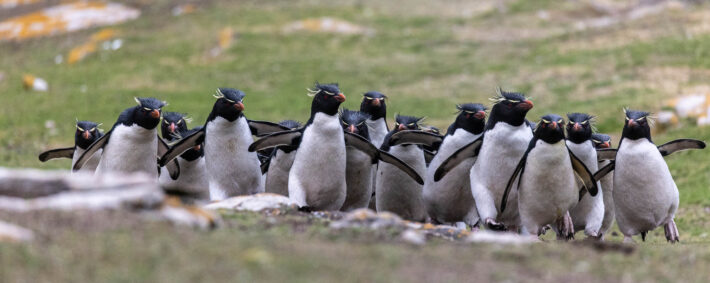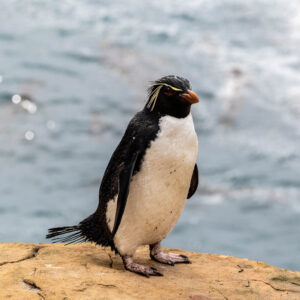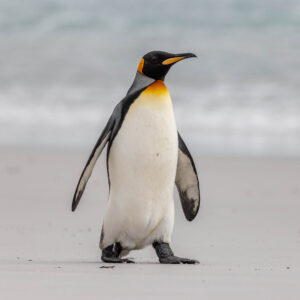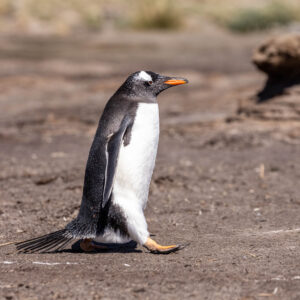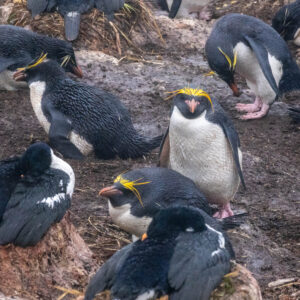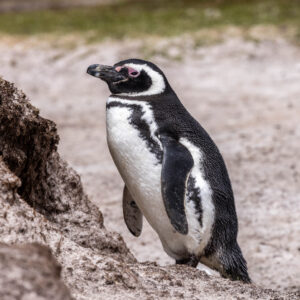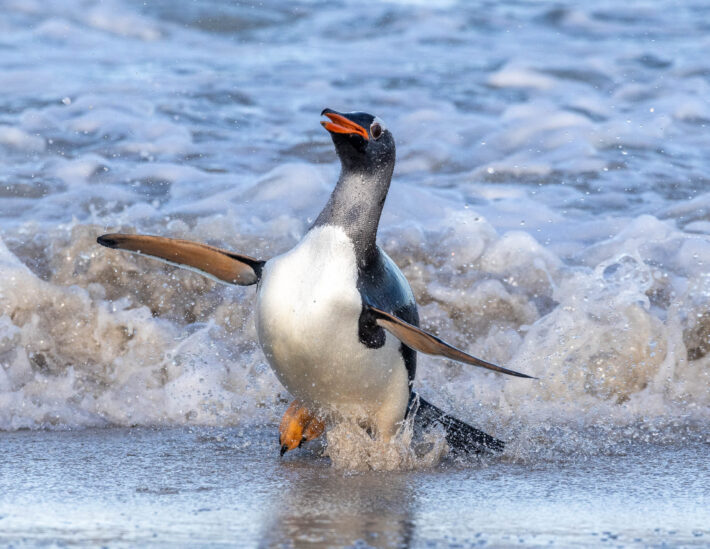
We were first introduced to the Falkland Islands over a dozen years ago when we stopped there a couple of times our way to Antarctica. We were smitten by wildlife, particularly the opportunity to see 5 of the 17 penguin species in the world. After that we did a land trip and a return has been on our bucket list ever since. The Falklands have limited visitor capabilities, which combined with the pandemic led to numerous cancelled trips (including two this year) but we finally made it their this last November. And it was as advertised, including seeing all 5 penguin species.
Rockhopper King Gentoo Macaroni Magellanic
We were a little early in the season for new chicks but we dd see yearling King Penguin chicks, this one was begging its parent for food.
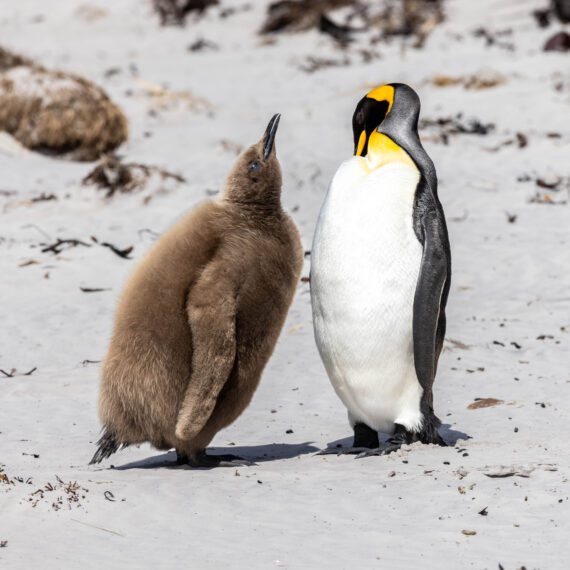
But we did see a lot of nest building, like these imperial skags bringing some soft plant material to their nests.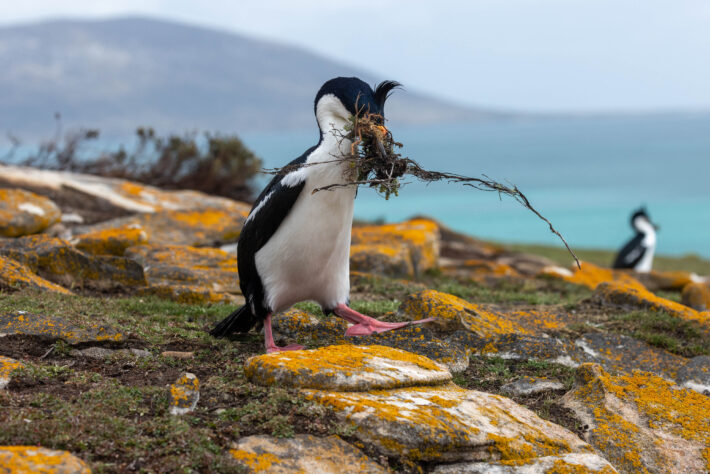
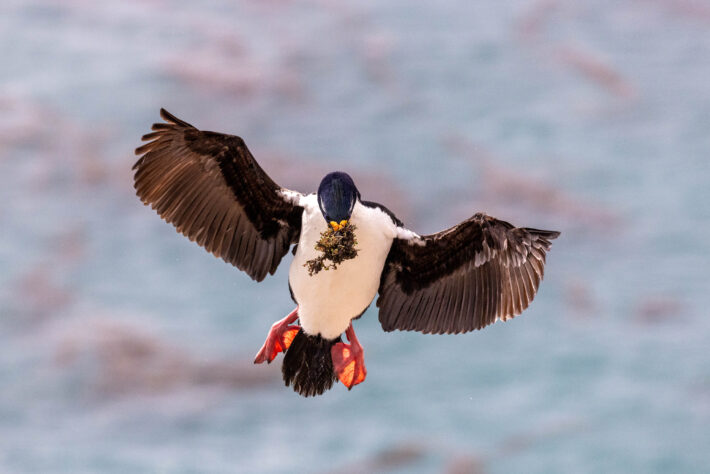
In the harsh environment of the rock hoppers, they cannot slide on their bellies like most penguins, so they hop to get around, hence their name.
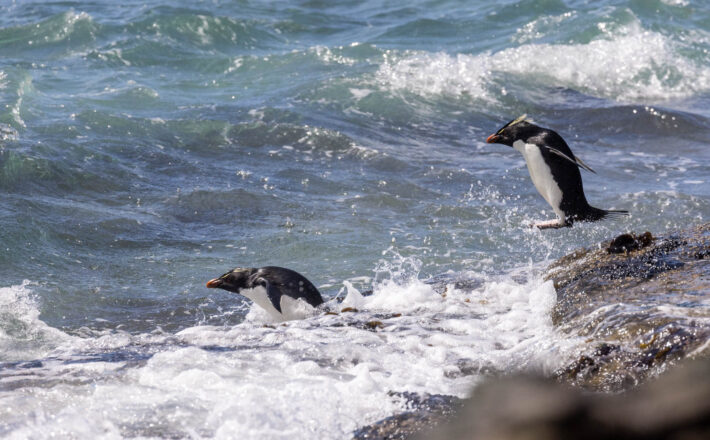
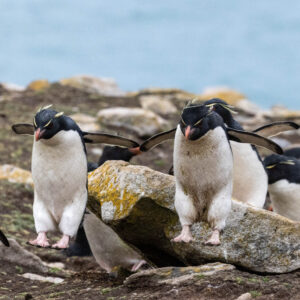
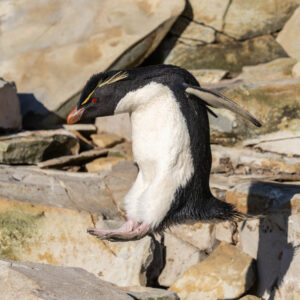
The rockhoppers weren’t the only penguin with an unusual propulsion method. Gento penguins also porpoise in order to help them navigate and see where they are going, as well to confuse and avoid predators.
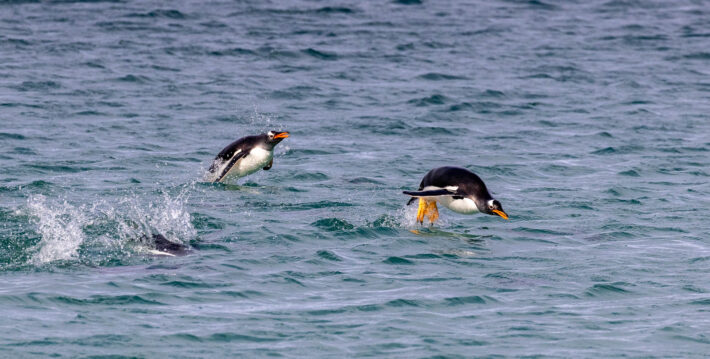
Besides penguins we saw other wildlife like this Black browed Albatross
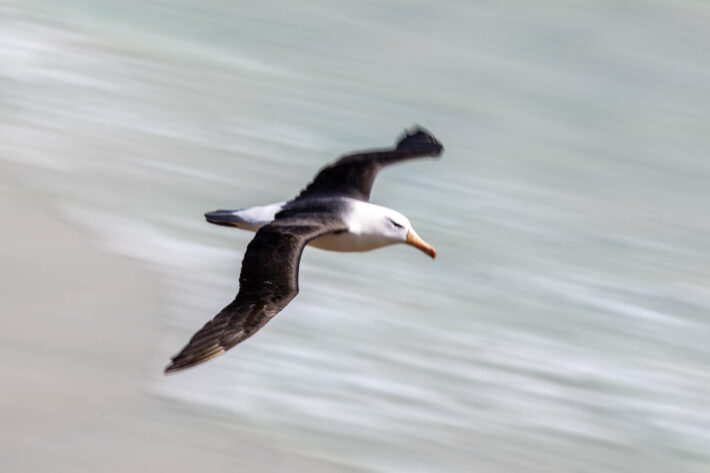
Snowy Sheathbill
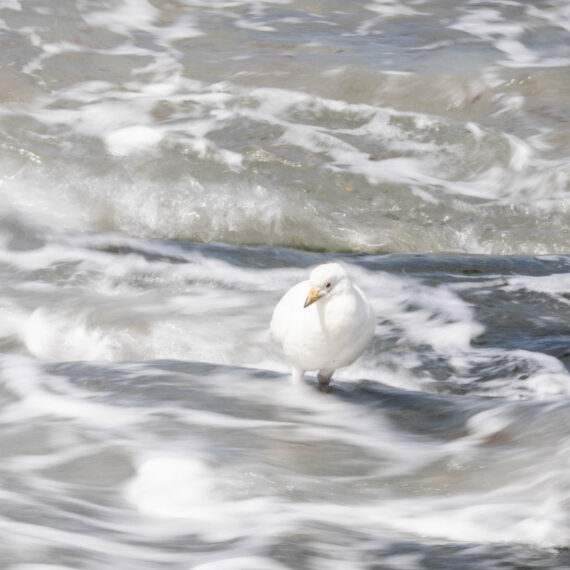
Striated Caracara (or Johnny Rook)
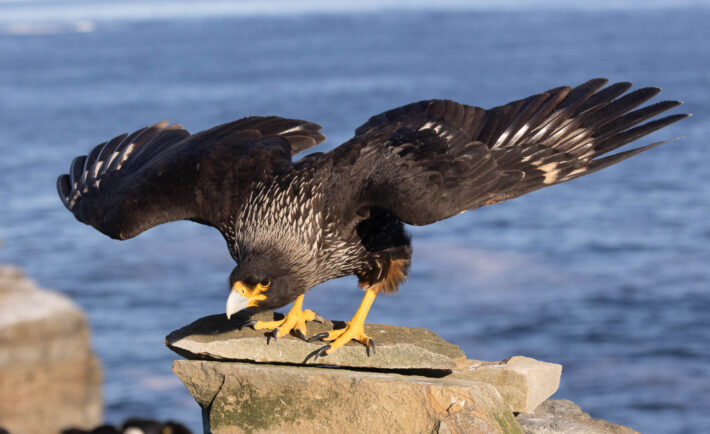
The Johnny Rooks are endangered and found only in Falklands and Patagonia. One of their favorite foods is penguins eggs and chicks, and they are constantly harassing the penguins, which makes them one of our least favorite birds.
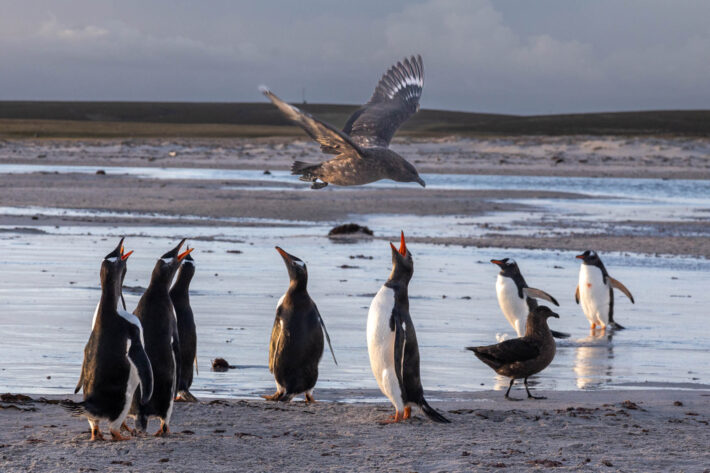
Getting around the Falklands is a challenge. The locations are disperse and effectively the only way to get between locations (settlements) is by plane in one of Falklands Islands Government Aviation Service (FIGAS ) Britten-Norman BN-2B Islanders. These small 5-7 passenger planes, while a bit cramped, efficiently and safely got you between islands
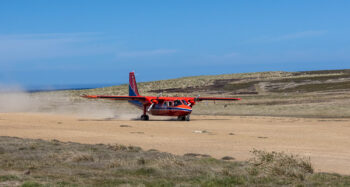
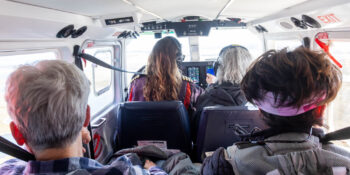
One you get to an island, to get from your lodge to the animals most often there were no roads which if you are not careful can lead to a sticky situation
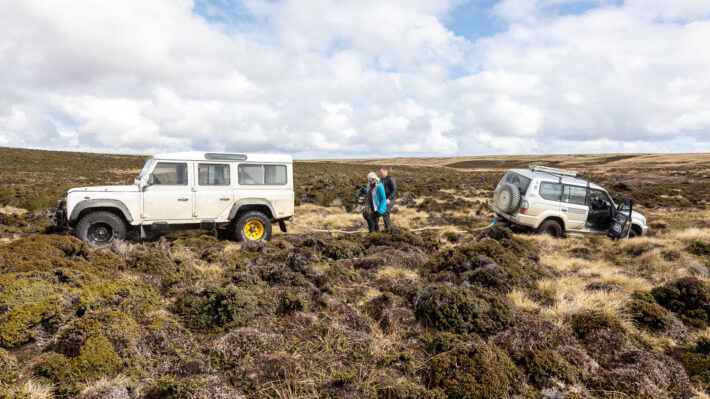
Unfortunately the roads were not much better, as they we mostly gravel, which meant they were slippery, and with no traffic it is easy to go fast, too fast. If you are not careful you can get up like this poor soul who had to be airlifted to the only hospital in the islands (we never found out what happened to the driver);
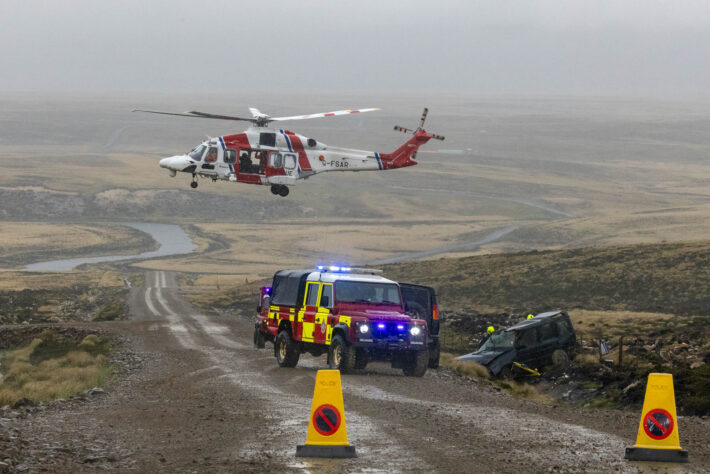
While we did get some clouds
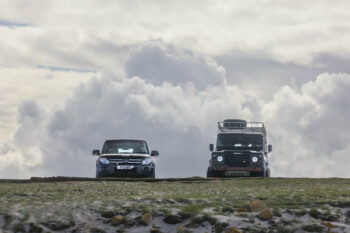
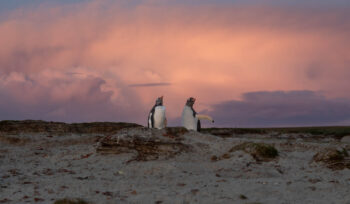
Many of our days were sunny and beautiful
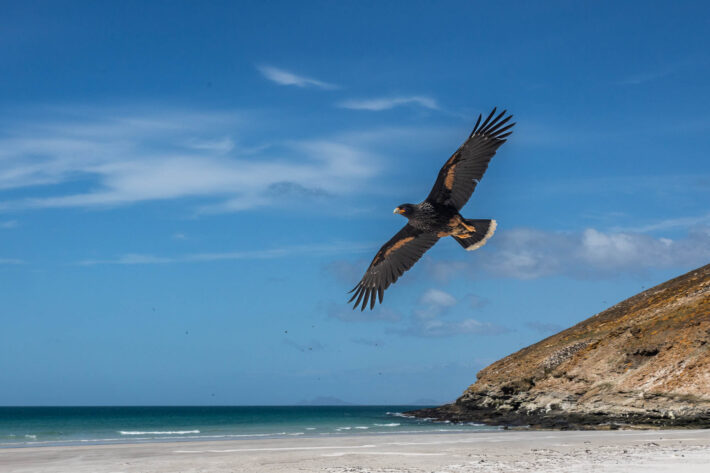
Of course the Falklands won’t be the Falklands without the wind
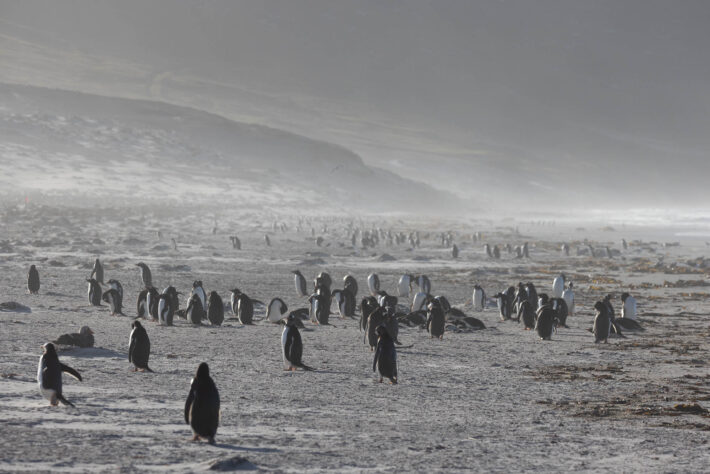
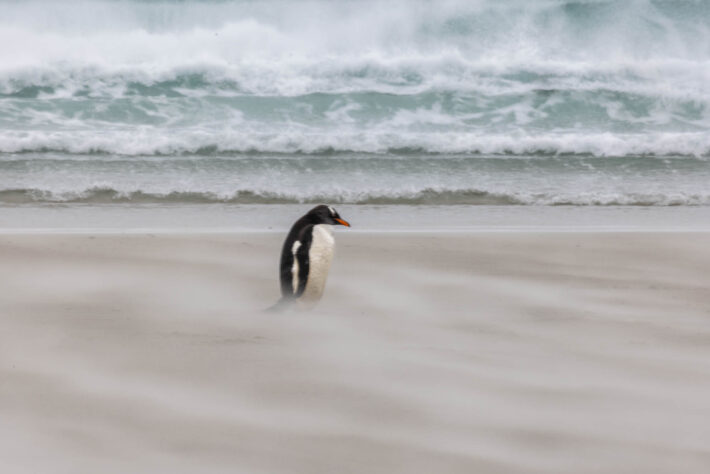
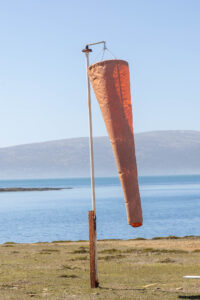
Unlike our previous trips to the Falklands, (Wind & Penguins) where it blew continuously and hard, the wind was usually not bad, and even absent occasionally.
A common theme of the Falklands is that you are rarely far from the water. Neither are the penguins for the ocean is where their food source lives
“>
Our last trip of 2023 was a great success and we hope 2024’s are as good.
